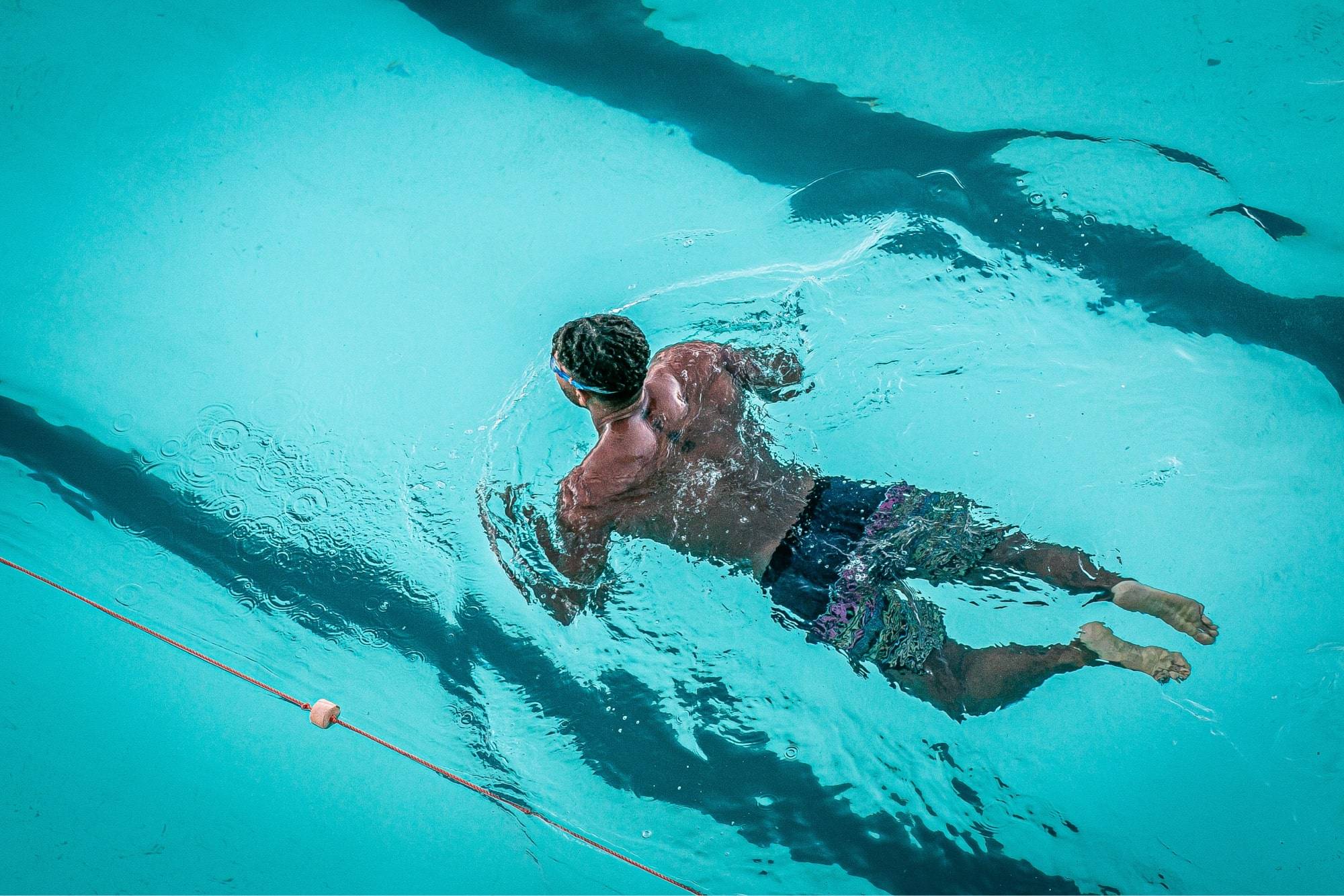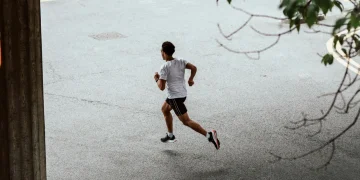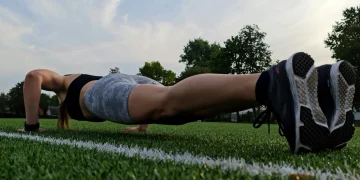Cross-training is a popular practice for runners to develop their whole bodies and prevent running-related injuries. Doctors suggest including swimming, cycling, weightlifting, and elliptical workouts into runners’ training routines to prevent knee osteoarthrosis and running injuries. In this article, we will inspect the benefits of swimming for runners and present a few swim workouts to build endurance.
Why You Need Swimming in Your Regimen
Athletes cross-train to gain speed or endurance or to recover from an injury. Swimming is the only sport that brings all three. Here are some of the advantages of swimming workouts for runners.
Cardio Training Without Impact
Hitting the pavement on a daily basis can cause a lot of strain on your joints and ligaments. While not detrimental to your body immediately, long-time runners will tell you of various injuries they have suffered in their careers.
If you want to lighten the load on your body, consider swimming as an alternative. The water’s buoyancy relieves stress and tension on your muscles, joints, tendons, and ligaments. Simultaneously, swimming can be more effective than running at building stamina. While swimming endurance is a bit different from running, it still translates well into land sports.
Full-Body Training
Are you afraid that your marathon training plan only includes lower-body exercises? Include swimming and watch your whole body get stronger. Swimming is among the few activities that train all your muscles: you use your legs for kicking, your arms and shoulders for strokes, and your core for flipping, turning and generally keeping yourself afloat.
Runners often overlook the usefulness of a full-body workout—and then regret it when they can’t keep their form in a marathon. The truth is, core strength is crucial not only for your general appearance (although that is a major advantage) but also for your posture and balance. You might not notice the difference immediately, but when you’re able to squeeze in more miles or take seconds off your time—you’ll be thankful that you swim.
Injury Recovery
Swimming is a great way to speed up recovery after a running-related injury. While it’s not a miracle cure, a study published by the International Journal of Sports Medicine revealed that participants using swimming-based recovery sessions performed better than those recovering passively.
Moreover, it affects your mental state. For an athlete (especially a professional), it is daunting to simply lay in bed doing nothing. It’s exhausting to the point of borderline depression. Swim workouts for injured runners can improve their mental state.
As a side bonus, even perfectly healthy runners can benefit from switching to swimming for a few training sessions just to get out of the exercise rut.
Best Swim Workouts for Runners
A lot more can be said about the benefits of swimming for runners, but no words will convince you more than your own experience. We have prepared a few good swimming workouts for you to try below.
“Just Keep Swimming”
Beginner swimmers might feel intimidated by all the variations in swimming techniques. We strongly advise against jumping straight to marathon swim workouts. Instead, try this easy routine to get you started.
Start by simply swimming for 20 minutes straight. Your goal is to build stamina and get comfortable swimming for extended periods, so don’t bother counting the laps. As the saying goes, “just keep swimming.” Add a minute every time you feel comfortable doing the workout.
When you can swim comfortably for 30 minutes, you can try a different pool workout for runners.
Lung Builder Set
Studies have shown swimmers have the highest lung capacity and the most developed diaphragms compared to runners and football players. Steal this swimming drill for endurance and be impressed with the results.
Do 12 sets, 100 meters each. You can choose the stroke type. Take a deep breath every three strokes in the first 25 meters. For the next 25-meter-stretch, take a breath every five strokes. Then, every seven strokes for 25 meters. For the final 25 meters—sprint.
Note that you are not meant to hold your breath during these sets. Instead, take deep breaths as indicated above and exhale slowly. This will enhance the lung-building effect and help you develop a stronger breathing technique for running.
Post-Run/Recovery Set
This set works great on recovery days, after long training sessions, or for recovering after an injury.
Warm-up by swimming at an easy pace for five minutes.
Put a pull buoy between your legs and start the set. Swim 250 meters at an easy pace. Then go for 50 meters at a medium pace. Then swim 50 meters at a fast pace. Finally, go for another 100 meters at an easy pace.
Rest 10 seconds between sets.
Do as many sets as you feel comfortable. Cool down by swimming 200 meters at a leisurely pace with or without the buoy.
Swimming with a pull buoy allows your legs to rest and trains your arms and core more, so this is an excellent option if you are injured or need to give your legs a rest.
Building Stamina
This one is great if you’re into endurance running, as it requires a lot of stamina. You can adjust the distances if you’re not comfortable with them.
Swim 300 meters, building speed every 100 meters. Rest at every 100-meter mark for 15 seconds on odd sets or 10 seconds on even sets. Then swim at an easy pace for 50 meters.
Do four sets.
Building Speed
This pool workout for sprinters is meant to build speed, but the stamina and strength you gain also translate well to running. This is a high-speed and high-rest set with small distances.
For odd reps, go for 50 meters. For even reps, go for 75 meters. Do ten reps for a total of 625 meters. You should get plenty of rest between each rep, we recommend 90 seconds at the very least.
If you want to be professional about it, time each lap and try to beat your previous record.
As you can see, swimming has no downsides as a cross-training for runners: it trains your upper body and builds endurance like nothing else. Add a few weekly visits to the local pool, and you will finish that marathon without breaking a sweat.
We hope you’ve found our list of stamina and speed training exercises to implement in a pool helpful. Good luck, and see you at the next marathon!






